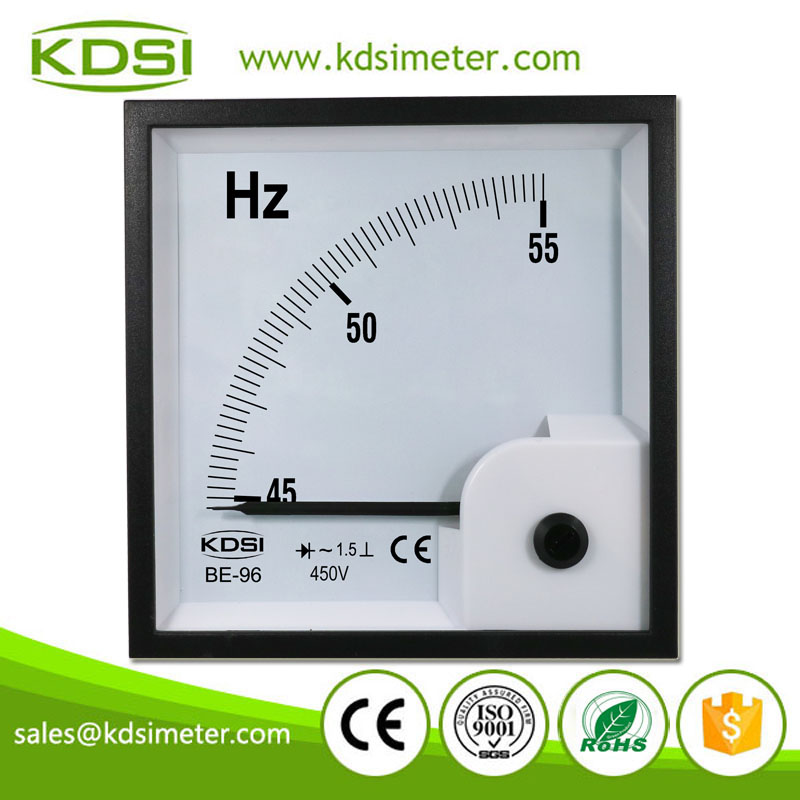- All
- Product Name
- Product Keyword
- Product Model
- Product Summary
- Product Description
- Multi Field Search
Views: 6 Author: Site Editor Publish Time: 2025-01-14 Origin: Site

Analog Frequency Meters: A Timeless Tool in the World of Electronics
In the realm of electronic measurements, precision and reliability are paramount. Today, we delve into the world of analog frequency meters, specifically the analog type frequency meter, a stalwart in the field of frequency measurement. Join us as we explore what makes this device tick and why it remains a crucial tool in various industries.
What is an Analog Frequency Meter?
An analog frequency meter is a device used to measure the frequency of an electrical signal. It is widely used in industries such as telecommunications, electronics, and power generation. The analog frequency meter stands out for its wide measurement ranges and voltage adaptability, making it suitable for a variety of applications.
Wide Measurement Ranges
The analog frequency meter we are focusing on offers wide frequency ranges, including 45-55Hz, 55-65Hz, and 45-65Hz. This wide range capability allows it to accurately measure frequencies in different scenarios, such as in power systems where the frequency may vary slightly due to load changes or in electronic circuits where different frequency components need to be analyzed.
Wide Voltage Range
In addition to its wide frequency ranges, this analog frequency meter also boasts a wide voltage range. It can operate at voltages of 100V-110V, 200V-230V, and 260V-440V. This makes it highly versatile, as it can be used in different power systems and electronic devices with varying voltage levels. It's a low-voltage control circuit, this frequency meter can provide reliable frequency measurements.
How Does an Analog Frequency Meter Work?
The analog frequency meter operates on the principle of converting frequency into a mechanical movement that can be visually interpreted. At its core, the device consists of an oscillator that generates a reference frequency. When an input signal is applied, it interacts with the reference frequency, causing a phase shift. This phase shift is then translated into a mechanical rotation of the pointer on the meter's face, which is calibrated to display frequency values. The movement of the pointer is directly proportional to the frequency of the input signal, allowing technicians to read the frequency directly from the scale.
Imagine you are tuning a radio. The frequency of the radio station is like the input signal to the frequency meter. The reference frequency generated by the oscillator is like the base frequency that the radio uses to compare with the station's frequency. When the station's frequency matches the reference frequency, there is no phase shift, and the pointer on the frequency meter stays at a certain position. If the station's frequency changes, the phase shift occurs, and the pointer moves accordingly, showing you the new frequency.
Advantages and Applications
The analog frequency meter has several advantages that make it a valuable tool. Its simplicity and reliability mean that it can provide accurate measurements without the need for complex digital processing. It is also easy to use, with a clear and intuitive scale that allows technicians to quickly read the frequency values. Moreover, its wide measurement ranges and voltage adaptability make it suitable for a wide range of applications, from power system monitoring to electronic circuit testing.
In the power industry, it can be used to monitor the frequency of the power grid, ensuring that it stays within the desired range for stable operation. In electronics, it can help engineers analyze the frequency characteristics of circuits, aiding in the design and troubleshooting process.
Conclusion
The analog frequency meter stands as a testament to the enduring value of analog technology in a digital age. Its wide measurement ranges and voltage adaptability, combined with its simplicity and reliability, make it an indispensable tool for professionals in various industries. As we continue to innovate and push the boundaries of technology, the analog frequency meter remains a reliable companion in the pursuit of accurate frequency measurements. Whether you are an engineer, a technician, or simply someone interested in the world of electronics, the analog frequency meter is a device worth getting to know.